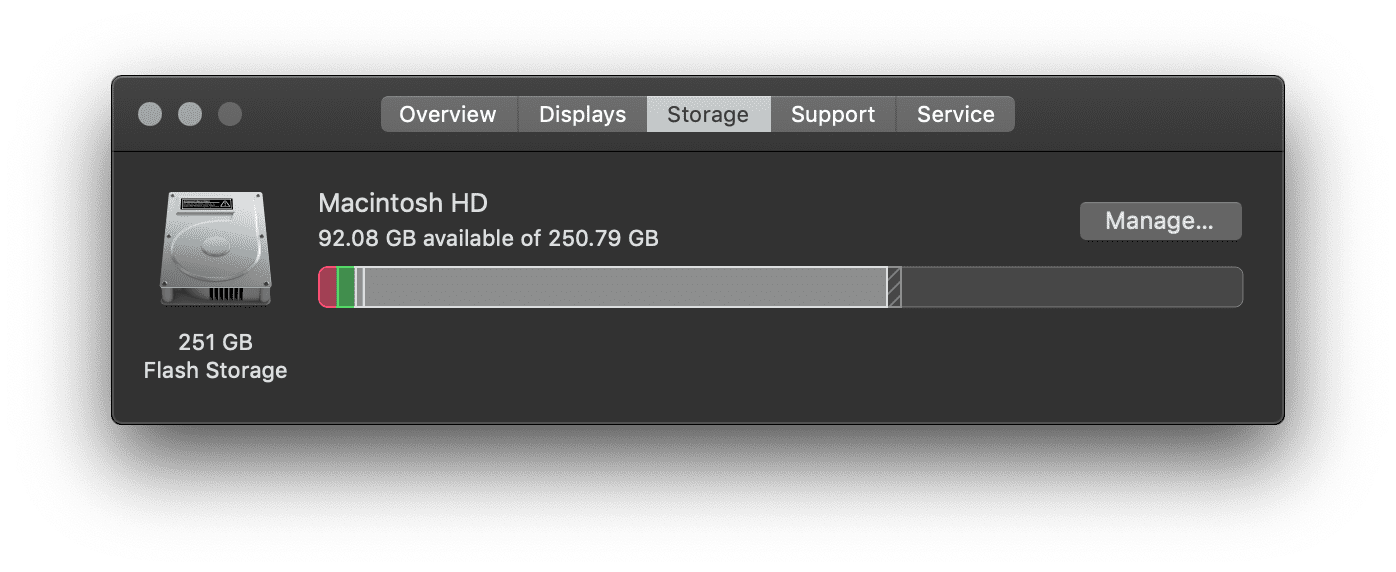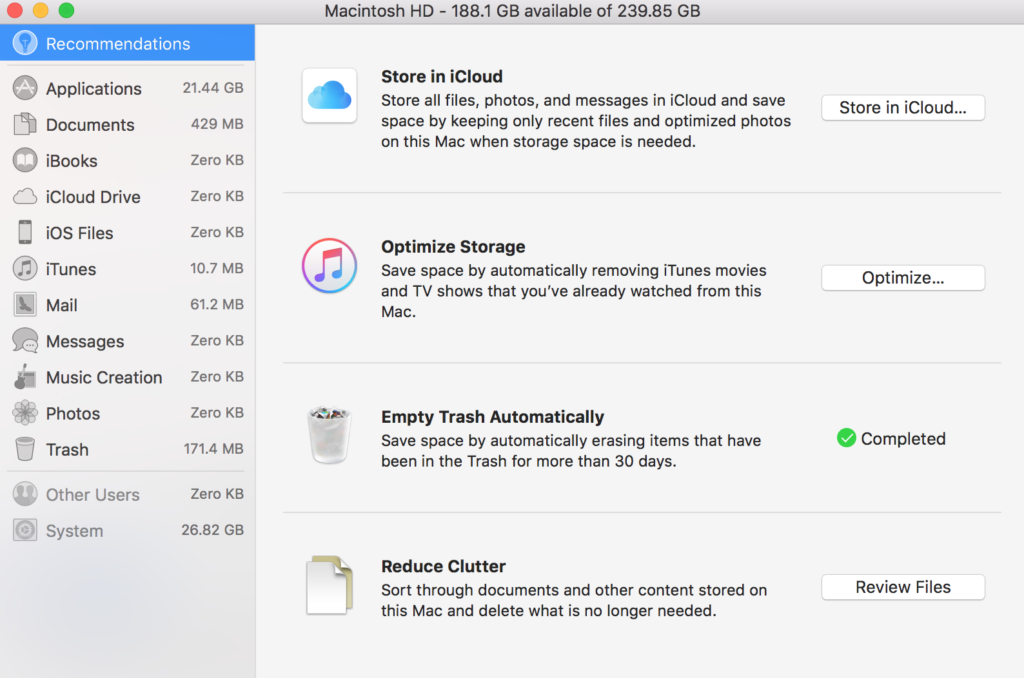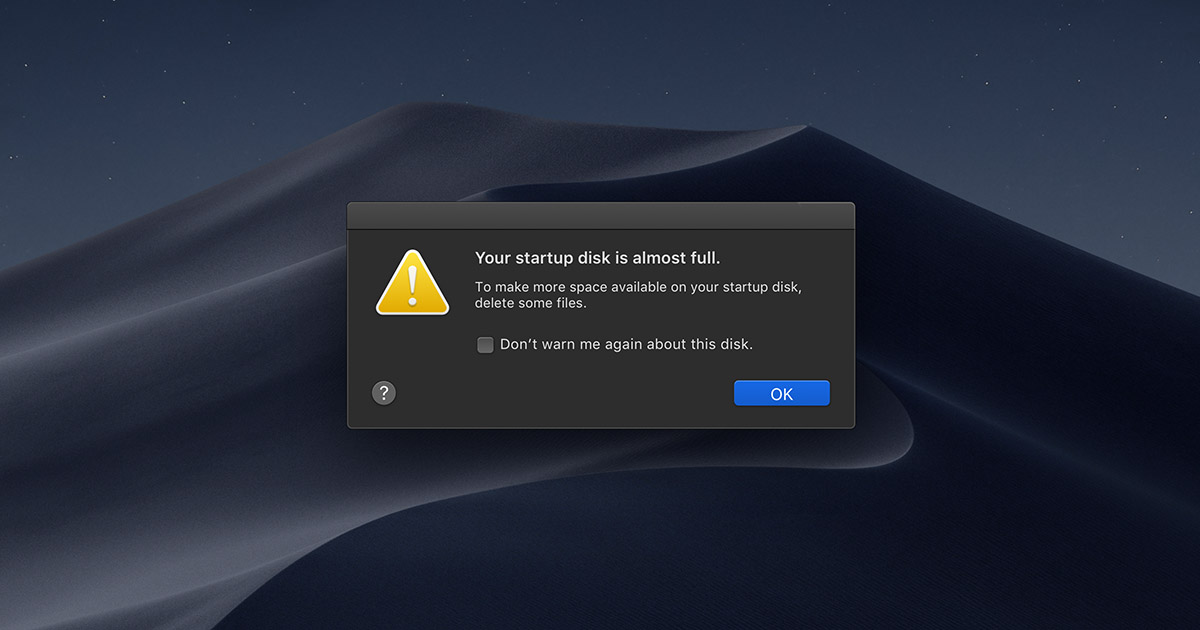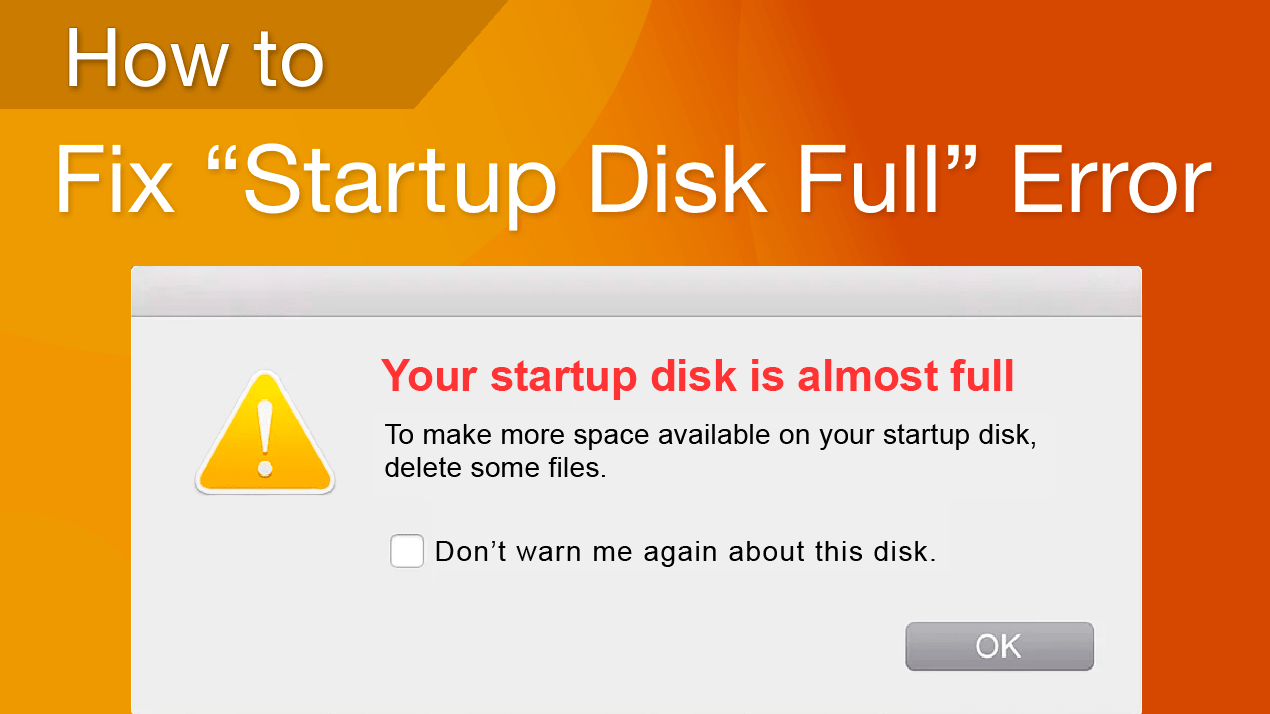How To Free Up Your Startup Disk Space On Mac
- How To Free Up Space On Your Startup Disk Mac
- How To Free Up Your Startup Disk Space On Mac Air
- Clear Space On Mac
Are you from those who suffer to free up disk space on your pc? If positive, then you should free up space on windows by clearing the junk files gobbling up space in the hard drive. And for a free space in your device, you need to know how to free up disk space within the real-time. Here are three simple methods to free up disk space on your pc:
UNINSTALL JUNK PROGRAMS
There are a number of patent software that come bundled with other software or that we forget we’ve installed. This first step simply involves going through a list of our existing programs and uninstalling the ones we no longer need.
Find and Remove Mac Duplicate Files. You have to admit that lots of duplicate files take up much. How to clear space on your Mac 1. Clear the Downloads folder. If your Mac is the primary device you use for browsing, you might have a ton of things in your Downloads folder. By default, this is the location your Mac stores files you get from the internet. Many users find large, unneeded files stored in their Downloads folder. Freeing space on your Mac OS X startup disk. This extract from a chapter of our book Troubleshooting Mac® OS X describes several ways to free-up space on your Mac OS X startup disk, also known as your Mac OS X boot volume. While you could replace your current hard drive with a larger model, or install a second internal hard drive if your Mac will support such, the following tips will help. #1 Check What is Taking up All of Your Disk Space Mac startup disk storage. You should have a general understanding of what is taking up your disk space. Simply click the Apple menu select 'About This Mac' click on the 'More Info' button choose the 'Storage' tab to check the disk storage overview and capacity. #2 Delete Unnecessary Files.
HOW TO FREE UP DISK SPACE IN WINDOWS 7?
HOW TO FREE UP DISK SPACE IN WINDOWS 7
- Click the Start button.
- In the search box, type > Programs and Features > press Enter.
- Select Programs and Features from the list.
This will give you a list of the programs installed on your computer. So, all you need to do is review the list and if you come across a program that you no longer require, or find redundant software such as multiple PDF readers, select the program you don’t want from the menu, right-click, and choose Uninstall.
HOW TO FREE UP DISK SPACE WINDOWS 8?
- Right-click the Start Screen button at the bottom-left corner of the Desktop. At the top of the menu, click Programs and Features.
- It will give you a list of the programs installed on your computer. Review the list and if you come across a program that you no longer require, or find redundant software such as multiple PDF readers, select the program you don’t want from the menu, right-click, and choose Uninstall.
- A dialog box will open asking if you’re sure you want to completely remove the program, you just have to click yes.
- Once the program has finished uninstalling, a dialog window opens to inform you of its completion.
THE BASIC WAY TO FREE UP SPACE ON WINDOWS
The Disk Cleanup utility is a program built-in to Windows designed to help you clean out useless files. To clear out hard drive space using the Disk Cleanup utility:
HOW TO FREE UP DISK SPACE WINDOWS 7?
HOW TO FREE UP DISK SPACE WINDOWS 7
- Click the Start button.
- In the search box, type ‘Disk Cleanup’. Click on Disk Cleanup when it appears at the top of the list of available items.
- In the list of drives, select the disk drive that you want to clean up.
- In the Disk Cleanup dialog box, on the Disk Cleanup tab, check the boxes for the file types you want to delete. We recommend selecting all of them.
- Now, ensure that you haven’t thrown any files in the Recycling Bin that you want to get back, then click OK.
- When the Disk Cleanup prompt asks ‘Are you sure you want to permanently delete these files?’ click Delete Files.
HOW TO FREE UP DISK SPACE WINDOWS 8?
- To clear out hard drive space using the Disk Cleanup utility:
- Point to the lower-right corner of the screen, move the mouse pointer up, click the gear icon called Settings.
- Click Control Panel at the top of the list, type ‘Admin’ into the Search box at the top right corner of the window, click Administrative Tools.
- In the list under Administrative Tools, double-click Disk Cleanup.
- At this point, a Disk Cleanup prompt may open with a status bar, calculating how much space you will be able to free on your hard disk.
- Once this calculation is completed, in the Drives list, choose the drive you want to clean, most likely the C drive, and then click OK.
In the Disk Cleanup dialog window, check the boxes for the file types that you want to delete, you can click all of the boxes, just make sure you don’t have anything in your Recycling Bin that you need! Click OK and then click Delete files.
FREE UP SPACE ON MAC STARTUP DISK AUTOMATICALLY
FREE UP SPACE ON MAC STARTUP DISK AUTOMATICALLY
With macOS Sierra, your Mac automatically takes these additional steps to save storage space:
- Detects duplicate downloads in Safari, keeping only the most recent version of the download
- Reminds you to delete used app installers
- Removes old fonts, languages, and dictionaries that aren’t being used
- Clears caches, logs, and other unnecessary data when storage space is needed
Safe your website from cyber attacks, Penetration Testing Services
HOW TO FREE UP SPACE ON MAC STARTUP DISK MANUALLY
Even without using the Optimized Storage features of Sierra or later, you can take other steps to make more storage space available:
- Music, movies, and other media can use a lot of storage space. So you need to know how to delete music, movies, and TV shows from your device.
- Delete other files that you no longer need by moving them to the Trash, then emptying the Trash. The Downloads folder is good place to look for files that you might no longer need.
- Move files to an external storage device.
- Compress files.
- Delete unneeded email: In the Mail app, choose Mailbox > Erase Junk Mail. If you no longer need the email in your Trash mailbox, choose Mailbox > Erase Deleted Items.
To harvest more information related to the news and blogs related to cyber security, please visit Securityx.
Here is a guide on how to resolve the “startup disk is full” error on your Mac computer.
The error for Startup Disk being full can definitely be an annoyance when we are attempting to work on a new project or import photos and we are halted with this message. The meaning behind this alert is quite simple as it signifies you are runningoutofspace on your hard disk, yet you may not know where to start when deleting to make room.
There are multiple ways to investigate where the storage is being taken up on your Mac and a few tools I would recommend to find the best ways to free up space and get you working again.
How to Resolve Startup Disk is Full Error on Your Mac
How to download scp secret laboratory on mac. Here are the steps to take in order to get more free space on your Mac and avoid this error.
How to Free Up Space on Your Mac
The main issue with the startup disk being full is likely datasitting on your machine that does not need to be there. MacOS Sierra has a built in Optimized Storage yet this solution moves files to iCloud which may not be the best option for all users depending on their online storage capacity.
So where is the storage being taken up? There are usually a couple of culprit file types that are taking up unnecessary space and they predominatelymedia. Most users will find that they have quite a bit of media they do not need on their Mac including videos and photos. There are a couple of different ways to get information on where your disk space is going.
Emptyingthetrash is the best first step. Many users will delete files for months on end and forget to empty the trash, actually freeing up the space. If trash is empty however, you may need to check elsewhere for storage being taken up. If you are confident that you know where the space is being taken up, you can navigate to Finder and delete those files. What if you do not know where to start however?




Avast antivirus free download for windows 10 64 bit 2020. There are fortunately multiple third party options for mapping your hard drive and giving you information on its storage yet the one I have used the most is free utility, Disk Inventory X.
How To Free Up Space On Your Startup Disk Mac
Disk Inventory X will allow you to check your Hard Drive contents and will graphically lay out where all the space is being allocated. I am a fan of this utility due to the visual component and it easily helps identify biggerchunks of data and more importantly, where they are located.
If you see big chunks of data that you do not need, you can movetoTrash right from the app and start to quickly delete data you do not need. Be careful nottodelete items from the System folder or MacOS folder as some of these files are necessary. Look for items in your User directory to start with as these are likely taking up space.
Things like cache and .temp files are packages your computer creates for temporary use to store pertinent information yet sometimes can bloat up and take up quite a bit of space. As long as these files are not necessary to running a given application, they can be deleted.
How to Not Run Out of Space All the Time
How To Free Up Your Startup Disk Space On Mac Air
In my experience, it is almost always a great idea to store all mediaoff of the actual harddisk. This means that you should store items like photos, music and movies in a Cloud environment such as iCloud Photo Library, iTunes Match or any number of third-party solutions. The main objective by accessing online media is to alleviate the amount of storage taken up on your internal hard drive. You will take strain off of the device by allowing it to run with lots of operating room.

This is not however a warning to never utilize the internal storage of the computer as that is indeed it’s purpose, yet more so to selectivelystorefiles on the hard drive. If you are frequently editing photos and videos, it is a good idea to have them running off of an external drive and access them through your Mac. In the event of a hard drive crash, it is much easier to trust that your content is safe if it is not located on the internal drive.
In addition to selectively using the drive, it is a great best practice to keep an eye on the Storage tab in AboutThisMac from the Apple pull-down menu. You will see a simple graphical representation of storage capacity (very similar to iTunes’ storagelayout) and will give you a look at what the computer is being used for. If you see any given tab such as Photos getting large and taking up storage, it may be a good time to move some media to an external drive or cloud storage.
A simple restart is often a great idea as the startup disk size can change depending on open applications, available disk space at any given moment and cache files being used. Restarting the Mac will allow these processes to safely end and then reclaim the space used.
By keeping a watchful eye on your hard drive storage, you will be able to avoid the pesky Startup Disk is Almost Full error and be able to alwayshaveavailablespace for your various activities on your Mac.
Related Posts
Clear Space On Mac
Here are the steps to take in order to fix Mac keyboard keys that have…
Here is a guide on how to create encrypted disk images in MacOS to backup or…
Here is a guide on how to detect Mac malware and safely remove it from…